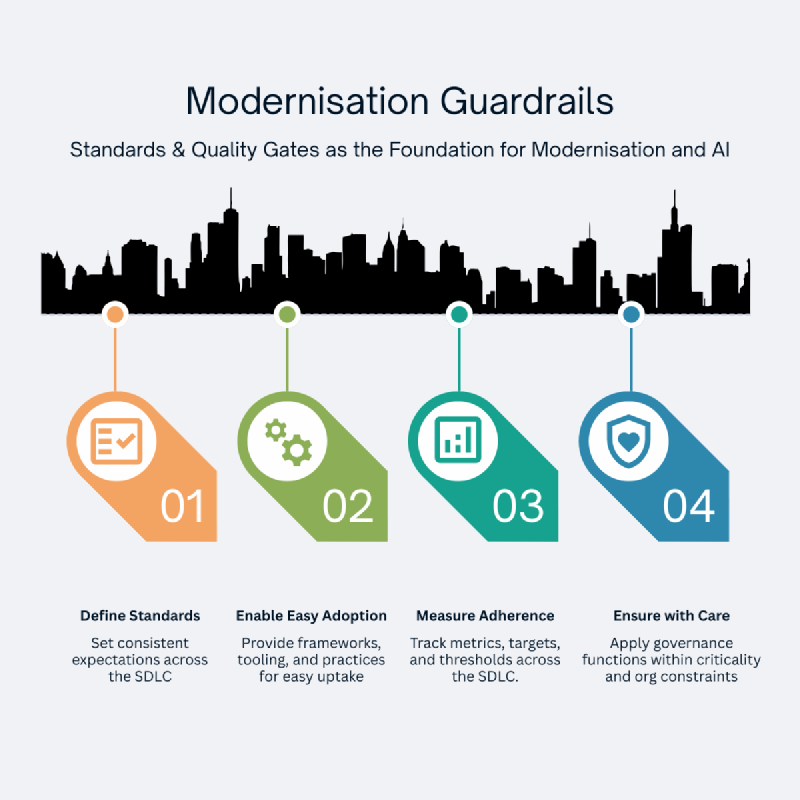Introduction
Without these standards applied, measured, and enforced across the SDLC — from requirements and analysis to architecture, design, build, test, security, release, and operations — enterprises risk fragmentation, drift, and poor outcomes.
The Path Forward
The path forward is clear:
- Define standards - set consistent expectations across the SDLC.
- Enable easy adoption - provide frameworks, tooling, and practices for easy uptake.
- Measure adherence - track metrics, targets, and thresholds across the SDLC.
- Ensure with care - apply governance functions within criticality and organisational constraints.
Quality Gates as More Than Checklists
When these foundations are in place, quality gates become more than checklists. They provide:
- Guardrails that ensure the right activities happen, at the right stage, at the right quality.
- Observability and trust — not just detecting drift, but building confidence in the process.
- The freedom for engineers to innovate, knowing the basics are safeguarded.
Where AI Comes In
And here’s where human-directed AI comes in. Quality gates grounded in consistent standards create the perfect substrate for AI augmentation. AI can:
- Grade outputs against standards, ensuring consistency and reliability.
- Alert on drift or non-adherence, helping teams course-correct early.
- Automate repetitive compliance checks, freeing humans for higher-value work.
- Leverage high quality context in context engineering to produce smarter, more relevant AI-driven decisions.
Conclusion
That’s how modernisation, foundations, and AI intersect: quality gates as the bridge from standards to safe AI augmentation.
